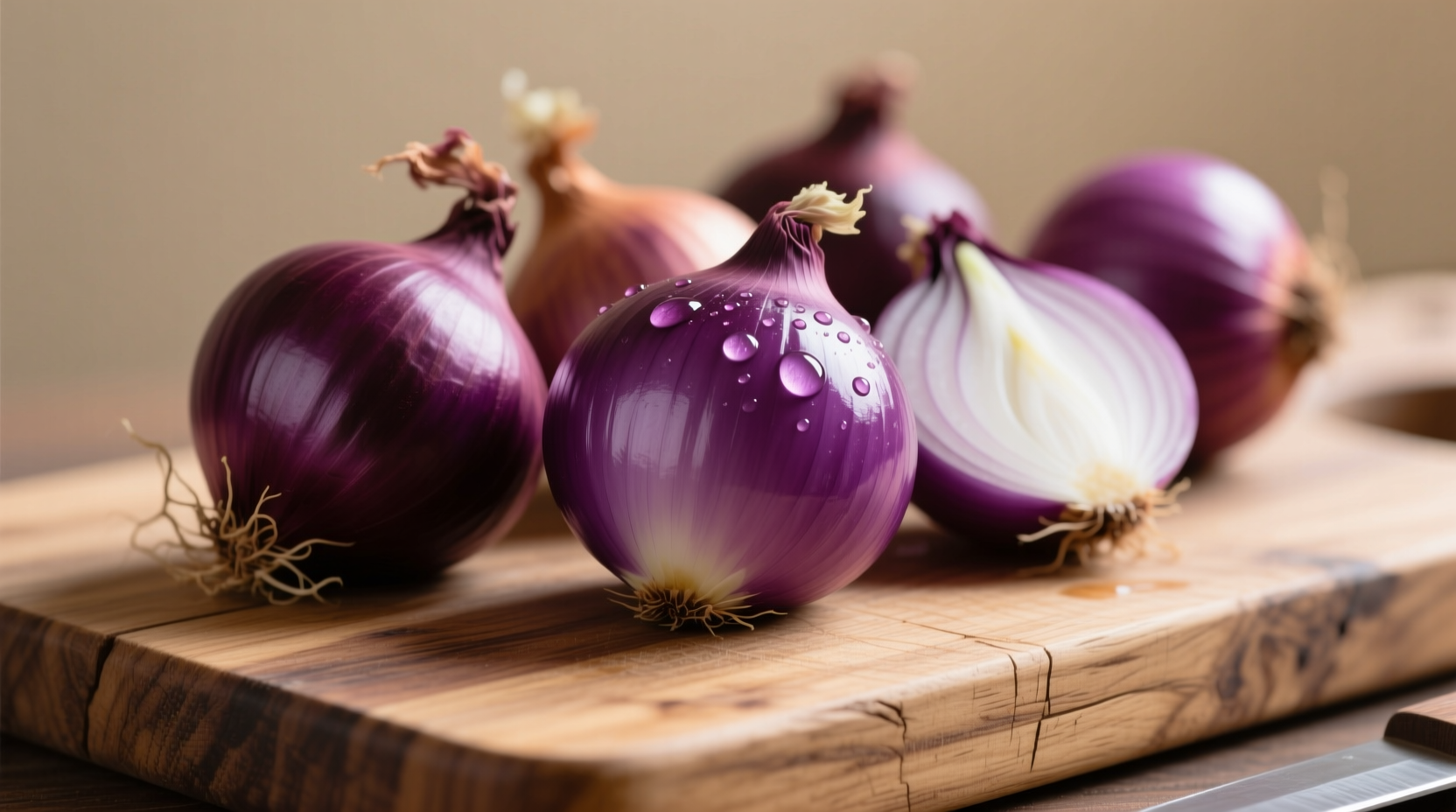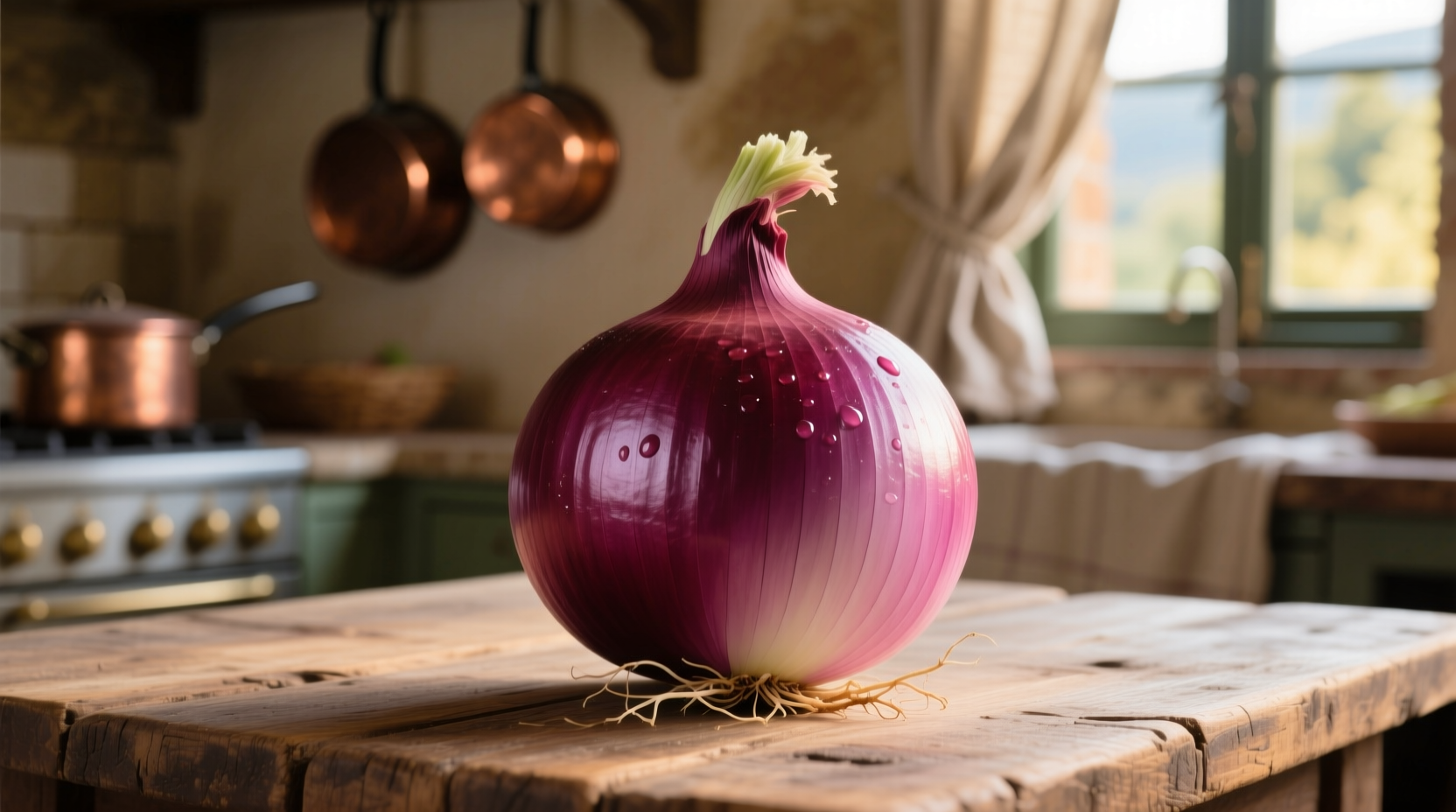Imagine slicing into an onion that doesn't make you cry, yet delivers complex sweetness with hints of berry and citrus. That's the magic of Tropea onions (Cipolla Rossa di Tropea), Italy's culinary treasure that transforms ordinary dishes into extraordinary experiences. In this guide, you'll discover why these vibrant red bulbs have captivated chefs and home cooks alike, how to select and use them properly, and what makes them fundamentally different from ordinary supermarket onions.
What Exactly Is a Tropea Onion?
Grown exclusively along Calabria's Tyrrhenian coast in southern Italy, Tropea onions (Cipolla Rossa di Tropea IGP) represent one of the world's most distinctive onion varieties. Unlike common yellow or red onions, these bulbs develop their signature deep violet skin and translucent purple-white flesh through a unique combination of Mediterranean climate, mineral-rich volcanic soil, and traditional cultivation methods passed down through generations.
| Characteristic | Tropea Onion | Regular Red Onion | Yellow Onion |
|---|---|---|---|
| Sugar Content | 6-8% | 4-5% | 3-4% |
| Pungency Level | Very Low (0.01-0.03% sulfur compounds) | Moderate (0.05-0.08%) | High (0.1-0.2%) |
| Best Used | Raw applications, quick cooking | Cooked dishes, salsas | Caramelizing, long cooking |
| Seasonality | July-October | Year-round | Year-round |
The Protected Heritage of Calabria's Red Gold
Tropea onions earned their Indicazione Geografica Protetta (IGP) status in 2007, legally protecting both their name and production methods. This European Union designation ensures only onions grown in the designated coastal strip between Capo Vaticano and Palmi—using traditional techniques without chemical fertilizers—can bear the authentic Cipolla Rossa di Tropea IGP label. The European Commission's official IGP documentation specifies strict growing parameters including soil composition, planting density, and harvesting methods.
Their distinctive sweetness results from Calabria's unique terroir: sandy coastal soils rich in magnesium and potassium, combined with intense Mediterranean sunlight and sea breezes that reduce sulfur compound development. Local farmers harvest these onions by hand between July and October, allowing them to mature slowly for maximum sugar development while maintaining crisp texture.
Why Chefs Treasure Tropea Onions
Professional kitchens prize Tropea onions for their remarkable versatility. Their low pungency means they can be sliced paper-thin for salads without overwhelming other ingredients, while their high sugar content creates beautiful caramelization in just 8-10 minutes—half the time required for regular onions.
When selecting Tropea onions at market, look for firm bulbs with tight, unbroken skin showing deep purple hues. Avoid any with soft spots or green sprouts. Properly stored in a cool, dark place with good air circulation, they'll maintain peak quality for 2-3 weeks—significantly longer than many believe due to their thick, protective skin.
Perfect Pairings: Culinary Applications
While excellent raw in salads, their culinary potential extends far beyond:
- Classic Caprese variation: Alternate slices of Tropea onion with tomatoes and mozzarella, drizzled with aged balsamic
- Quick-pickled condiment: Thin slices in red wine vinegar with bay leaves and peppercorns (ready in 2 hours)
- Seafood enhancement: Raw shavings over grilled octopus or swordfish
- Sweet-savory sauces: Cooked down with tomatoes for pasta sauces that require no added sugar
- Unexpected dessert application: Caramelized with apples for tarts or galettes

Nutritional Advantages Worth Noting
Beyond their exceptional flavor, Tropea onions offer notable health benefits. Their deep purple color indicates high anthocyanin content—antioxidants also found in blueberries and red cabbage. Research published in the Journal of Agricultural and Food Chemistry confirms red onions contain up to 11 times more anthocyanins than yellow varieties. These compounds support cardiovascular health and exhibit anti-inflammatory properties.
Unlike many sweet onion varieties that sacrifice nutritional value for taste, Tropea onions maintain high levels of quercetin (a flavonoid with potential anti-cancer properties) while delivering their signature sweetness. Their lower sulfur content also makes them more digestible for people sensitive to regular onions.
When Substitution Becomes Necessary
Finding authentic Tropea onions outside Italy can be challenging. While no substitute perfectly replicates their unique profile, these alternatives work in specific applications:
- For raw applications: Vidalia or Walla Walla sweet onions (milder than red onions)
- For cooking: Red Bermuda onions with a pinch of sugar
- Budget option: Regular red onions soaked in cold water for 10 minutes to reduce pungency
Remember that authentic Tropea onions should never taste aggressively sweet like some commercial sweet onions—they maintain a delicate balance between sweetness and subtle acidity that defines their culinary magic.
Preserving the Tradition
The Calabrian Agricultural Consortium reports that genuine Tropea onion production has increased 30% since IGP protection, helping preserve traditional farming methods while supporting local economies. When purchasing, look for the official IGP logo—a guarantee you're getting the authentic product that's sustained Calabrian communities for centuries.











 浙公网安备
33010002000092号
浙公网安备
33010002000092号 浙B2-20120091-4
浙B2-20120091-4